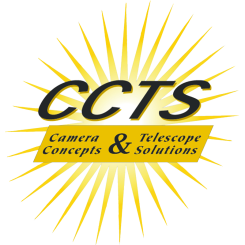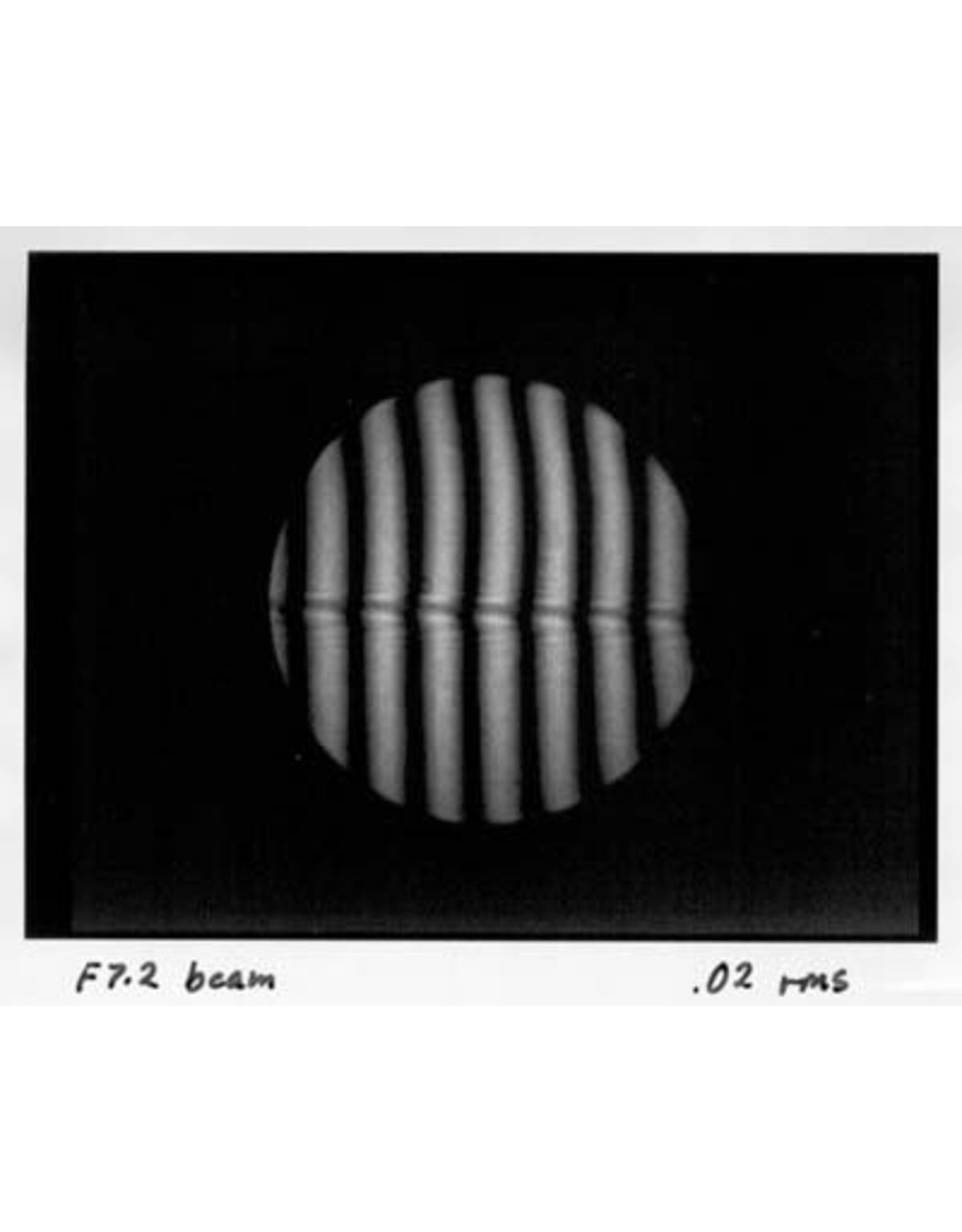Baader Planetarium Precision Amici Diagonal
| Article number: | AMICI-DX1 |
| Availability: | More on the Way to us |
| Delivery time: | More on the Way to us |
Baader Planetarium produces what we think is easily the finest amici prism star diagonal available today. The prism has been made to the original Zeiss specifications ** that were used for their famous amici diagonal turrets, in order to provide image quality that suffers from none of the defects found in commonly available correct image amici diagonals.
|
The Amici Prism has long been favored as the best choice for producing correctly oriented images in refractors and cassegrain type telescopes. However, the production of an amici prism is complex and requires a much higher level of quality than a standard mirror or right angle prism diagonal. Prism faces must be polished smooth, flat, and very accurately located at the proper positions and angles. The sharp roof edge must be made vanishingly fine. These demands on prism quality are the prime reason why even expensive amici prism diagonals have developed a deserved reputation for poor image quality. Even the so-called premium quality amici prisms typically produce astigmatic or asymetrical images and display a bright prominent central diffraction spike (the roof edge diffraction spike in the Baader Amici is extremely faint). Also, making matters worse, undersized prisms are used to save cost and large housings give the false illusion of a large clear aperture (as is the case with most so-called 2" amici star diagonals available today). Baader Planetarium produces what we think is easily the finest amici prism star diagonal available today. The prism has been made to the original Zeiss specifications ** that were used for their famous amici diagonal turrets, in order to provide image quality that suffers from none of the defects found in commonly available correct image amici diagonals. The finest 7-Layer Multi-Coatings ensure the image is bright and contrasty, and the oversized prism provides the full clear aperture of 1.25”! The precision machined aluminum housing provides a stress free mounting and precise location for the prism, unlike the typical weak plastic or crudely cast and machined housings found on lesser diagonals. The end result is a correct image diagonal that is good enough for more than just high-quality terrestrial viewing. Correct image diagonals have been used traditionally for terrestrial viewing, and limited to low (under 100X) magnifications. The high quality of our diagonal lets you use much higher magnifications without aberrations or image breakdown for both astronomical and terrestrial uses. The diagonal is perfect for matching astronomical charts or sketching correctly oriented planetary detail. It also functions well with the Baader Maxbright BinoViewer and Baader/Zeiss Mark V BinoViewer, to provide correctly oriented binoviewing. Many users have commented to us on how wonderful it is to enjoy correct-image views of all planetary and deep sky objects, and that they would not go back to traditional star diagonals. Finally, views that match star and lunar charts! One of our customers (a professional optical engineer) turned to us when he needed a high quality correct-image diagonal. This same customer had first tried a competitive (so-called 2") amici star diagonal and had found it useless due to its poor image quality. He was thrilled with the quality of the Baader Amici, and sent us his detailed comments and Interferograms from his WYKO digital interferometer. Please click the link below for his report. * NEW * * PLEASE NOTE: The Baader Amici Star Diagonal incorporates standard T-2 threads at the input and output faces, and is provided as a basic component, without any input or output fittings. This permits the diagonal to be used as a compatible component along with the other Baader Planetarium T-2 accessories, like the Baader Maxbright Binocular Viewer. This also enables you to configure the diagonal to exactly suit your needs, and to fit 2" or 1¼” eyepieces, and focusers. Please see Eyepiece Adapters, Rings for applicable fittings, and the T2 Diagonal Configuration page for detail on specific configurations. The effective optical path length of the base Amici Star Diagonal is approximately 64mm. To calculate the total path length of a particular configuration, see ASTRO T-2 System Specs for a detailed listing of threads and path length dimensions for all of the Astro T-2 system components. ** Many production divisions of the former government owned Carl Zeiss Jena have been privatized. The Zeiss core enterprise today concentrates on production of finished ultra-high end optical and medical devices. Many of the thousands of standard components are delivered to Jena "just in time" like any car factory works today. The opticians and skilled people that once made up the company are still alive (and kicking) and as a result many highly capable optical companies have developed in this region, still producing optics in the old Zeiss tradition. Baader has people employed who formerly worked at Zeiss Jena and they still use their contacts to existing optical shops there for the production of their prisms and all optical components for the Mark V binocular, all produced to the original exacting Zeiss specifications and processes. Customer Comments: The Right Angle Correct Image view is wonderful with the 32mm Meade 5000 Plossl or the 27mm TeleVue Panoptic. I am very pleased with the transmission and absence of any diffraction spike from the roof of the prism. Robert Werkman, MD BTW, I also have both the Baader Zeiss and Amici T2 prisms. Both add a little CA in my 130 APO (as expected, which is why I purchased the mirror), but I have to say that the Amici in my EdgeHD 8 is just an amazing performer. Even with the complicated prism implementation and diffraction spike, I feel the contrast is better through the Amici than the Zeiss! On finer details at high power (>250x) I have always felt the Zeiss pulled ahead, but lately I'm not so sure. The Amici is now my primary diagonal on the Edge. Earlier this year I was looking at Mars through the Edge and TV BinoView, magnification around 480X. Even though the planet was under 14 seconds of arc in diameter, it was of the finest detailed views I could recall. It was only much later when I used the hand control to slightly adjust for drift did I realize I was using the Amici. Until that point I thought it must have been the Zeiss. Ed Lepieszo |
The following un-solicited report was provided by one of our customers. This test was made using a professional WYKO phase-shifting interferometer. For this test, he set up the prism in an f/7.5 converging beam, to accurately measure the total wavefront quality of the diagonal when used in an actual f/7.5 telescope. This means that the report includes the effect of the very small amount of spherical overcorrection that results from using a prism in a telescope's converging beam. This report is high testimony to the quality image that the Baader Amici delivers. In use, the only telltale sign of the amici roof edge being a single very faint diffraction spike on the very brightest stars (fainter than the diffraction seen from the spider vane of a newtonian).
"Here is the report I promised you. I've included several Wyko "phasemaps", these are 2D maps of the wavefront using false color. The most important one is the f/7.2 data set trimmed to f/7.5. You'll notice that the wavefront error is 0.015 rms and 0.094 p-v. Very nice numbers. Of course, the actual numbers are probably even better because of the roof diffraction effect. With the roof line masked off, the numbers are 0.012 rms and 0.057 p-v (1/80 wave rms, 1/18 wave peak to valley). This data more accurately describes the smooth wavefront and is indicative of how the prism will perform. I would say that except for the diffraction spike this prism will "disappear" in use."

Fringes
![]()
WYKO Contour Report, Full Data
![]()
WYKO Contour Report, Roof Line Removed
Configurations
As part of the ASTRO T-2 System, the T-2 Maxbright Mirror Diagonal, Precision Amici Star Diagonal, and T-2 Prism Star Diagonal can be configured in various ways. All three diagonals use the same precision machined housing and input/output T-2 threads. For some typical configurations, refer to the images below. Given the large apertures of these diagonals, it is possible to configure these diagonals for use with 2" eyepieces (see 2" configuration below). Some vignetting may be noticeable on the largest true-field 2" eyepieces, though some users have even used 30mm Naglers with good results.
In addition to visual configurations, the T-2 Maxbright Mirror Diagonal is well suited for digital imaging. The mechanical and optical quality allow you to position cameras at right angles to the optical path, without any loss in image quality or mechanical rigidity.
Of course, you are free to invent your own application, using any of the T-2 System components. For detailed dimensional specs on all Astro T-2 components, see the ASTRO T-2 System Specs.
 |
T-2 Diagonals, standard configuration for 2" focusers and 1.25" Eyepieces (back focus used in this configuration is 85mm). - Nosepiece 2"/T-2 (# T2-16) - Click-Lock Eyepiece Clamp 1¼” /T-2 (# T2-08)
|
 |
T-2 Diagonals, configured for SCT with Quick Changer System - Short T-Adapter (C8,16mm) (# T2-21) - T-2 Quick Change System (# T2-6,7) - Click-Lock Eyepiece Clamp 1¼” /T-2 (# T2-08) * Please Note, this image does not reflect the latest T2-08 Click-Lock Eyepiece Clamp design or the latest T2-21 Short T-Adapter design |
 |
T-2 Diagonals, with VIP Modular Barlow (and 2" nosepiece) - Nosepiece 2"/T-2 (# T2-16) -or- Nosepiece 1¼”/T-2 (# T2-14) - VIP Modular Barlow (# VIPB) |
 |
T-2 Diagonals, Configured for 2" eyepieces and focusers - Nosepiece 2"/T-2 (# T2-16) - Deluxe Eyepiece Clamp 2” (# T2-17) - OR - 2" Clicklock Eyepiece Clamp (CLSC-2) - Expanding Ring T-2i/2"e (#T2-28a)
|























